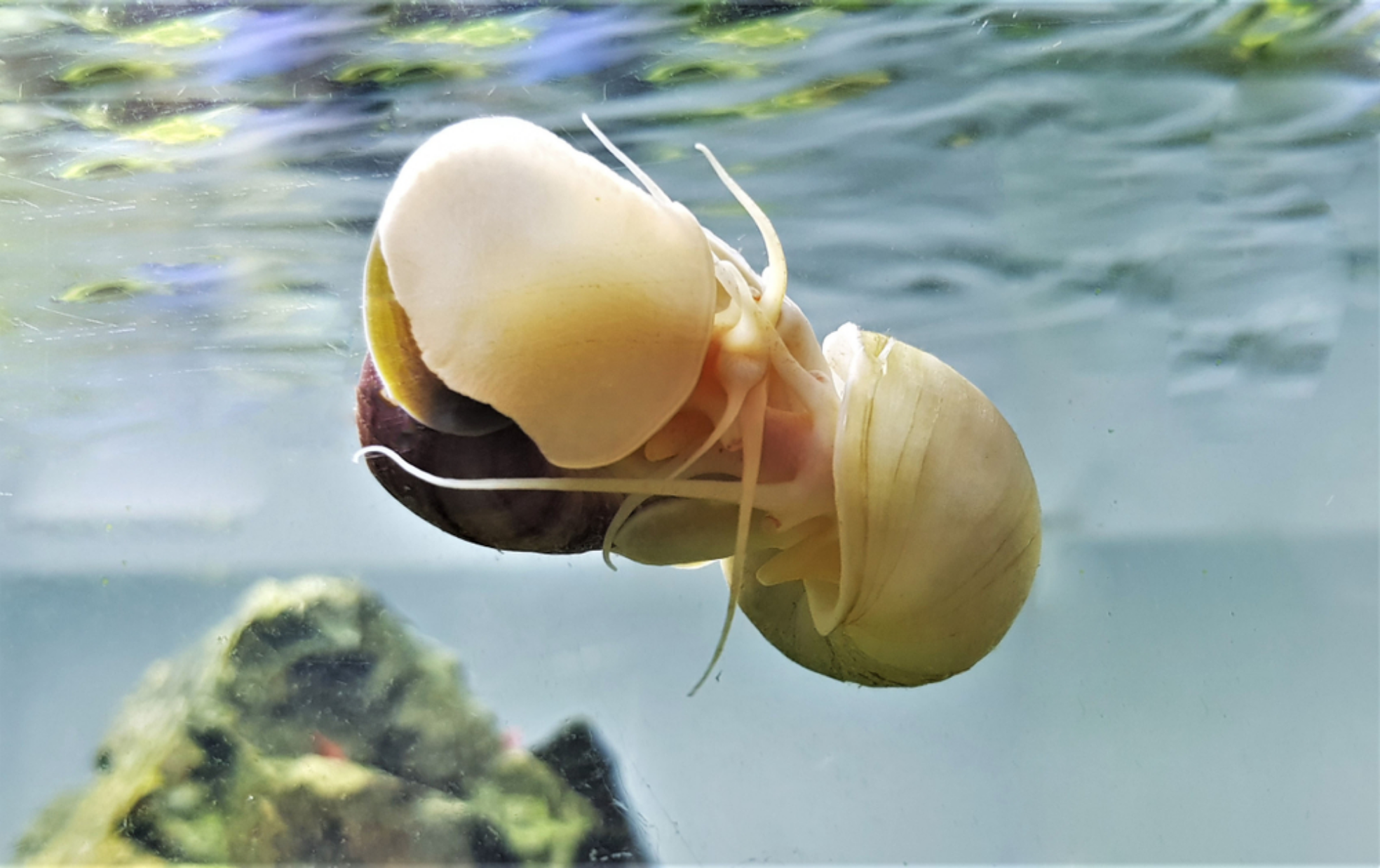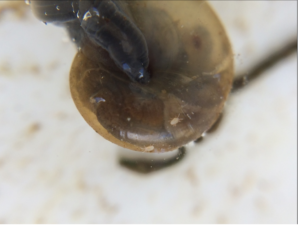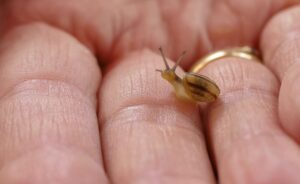For aquarium enthusiasts and casual observers alike, the unexpected surge in snail populations often raises questions. How do these tranquil, slow-moving creatures reproduce so efficiently in a tank?
Aquarium snails reproduce both sexually and asexually. Many species are hermaphroditic; they have both male and female reproductive organs, allowing self-fertilization. However, species like apple snails require both a male and female for breeding. Eggs can be laid underwater or above the waterline.
Delving into the diverse world of aquarium snail reproduction, we uncover the answers about their mating habits, egg-laying techniques, and the unique ways in which they ensure the survival of their species.
Introduction to Aquarium Snail Reproduction
For those intrigued by the underwater realm, aquariums serve as a captivating window into aquatic life. One of the unsung heroes of these ecosystems is the humble snail, often underestimated and overlooked.
But when it comes to reproduction, the world of the snail holds some of the most fascinating tales.
Recommended Reading: How Do Snails Reproduce? The Snail Love Story
Understanding Snail Sexes: Hermaphrodites & Separate Sexes
Snails, with their slow, graceful glide, are among the most interesting creatures to observe. Dive a little deeper, and their reproductive habits reveal a rich tapestry of complexity.
In many species of freshwater snails, their anatomy boasts hermaphroditic features. This means that a single snail possesses both male and female reproductive organs, leading to a unique duality in their reproductive process.
They are capable of self-fertilization, which is a feat not many animals can claim. It’s akin to kickstarting an entire colony with just a single snail!
Yet, not all snails exhibit this hermaphroditic trait. Some, like the apple snails and pond snails, showcase separate sexes. These species rely on the more traditional method of reproduction, requiring both a male and a female to mate.
To make things even more fascinating, certain females among these species have a unique capability – they can retain sperm for several months. This allows them to continue fertilizing themselves multiple times from a single mating encounter.
Species-Specific Reproductive Methods
Diving deeper into the specifics, two species stand out due to their distinct reproductive methods: the Pond and Ramshorn snails. These snails are renowned for their ability to mature rapidly, reaching reproductive maturity in mere weeks.
The Pond snails have an extra feather in their cap; not only do they reproduce asexually, but they also prefer sexual reproduction when given a chance. These snails lay jellylike masses of eggs, preferably on plants and the container’s sides, safeguarded underwater.
Their rapid multiplication, laying up to 100 eggs at once for Pond snails, underscores their prolific nature.
Recommended Reading: A Guide to Pond Snail Care, Size, Diet, and Pond Requirements
On the other end of the spectrum are the Mystery snails. These creatures challenge the norm, as they are not hermaphroditic. Instead, they distinguish between male and female sexes. This differentiation makes their reproductive process particularly fascinating.
Females lay clumps of pinkish eggs, usually choosing spots above the water, thus protecting them from potential fish predators. These eggs are more than just future snails; they symbolize the diverse and intriguing ways in which snails have evolved to ensure their survival.
Recommended Reading: Everything You Need to Know About Mystery Snails
Egg Laying vs. Livebearing
While many snails lay eggs, there’s an interesting division in how they choose to bring forth their offspring.
Most freshwater snails go the egg-laying route, with species like apple and pond snails placing their eggs just above the waterline, creating a safe haven from predatory fish. These egg layers often produce several hundred offspring at a time, revealing their potent reproductive capability.
Contrastingly, a few snail species, like the Malaysian trumpet snail, take the path less traveled. They opt for livebearing, where eggs are nurtured and hatched within the parent’s body.
Recommended Reading: Malaysian Trumpet Snail Care for Beginners
This method offers an extra layer of protection to the eggs, shielding them from external threats like predators. However, this internal space is limited, meaning fewer offspring are produced per breeding.
Reproductive Strategies Across Habitats
Every environment offers its own set of challenges and opportunities. For snails, reproductive strategies have evolved in tandem with their habitats, ensuring they adapt, thrive, and survive.
The environment plays a pivotal role in snail reproduction. Factors such as water temperature, availability of food, and even day length can influence reproductive patterns.
For instance, warmer water temperatures often expedite egg production. The subtle shifts in daylight can act as a signal for certain snail species, cueing them to lay their eggs.
Another aspect where habitat plays a role is in the growth of juvenile snails. After hatching, a juvenile snail’s growth trajectory depends largely on its surroundings.
In environments rich in food, with fewer predators and optimal conditions, juveniles experience rapid growth, often multiplying their size several hundred times in just their first year. This rapid juvenile growth ensures that they reach maturity quicker, ready to continue the cycle of life.
The Phenomenon of Snail Blooms
Just as flowers bloom in spring, snail populations can experience sudden explosions, often termed “snail blooms.” But what triggers such rapid population growth?
Overfeeding is a common culprit. An abundance of food provides snails with the nutrition they need to reproduce more frequently. Similarly, leaving deceased fish or plants in the tank can lead to a nutrient surge, further fueling snail proliferation.
Recommended Reading: Will Snails Eat Dead Fish?
However, it’s not just abundance that causes blooms. A lack of natural predators, combined with favorable environmental conditions, can set the stage for snail overpopulation.
The repercussions of such population explosions are manifold. A sudden surge in snail numbers can strain the tank’s ecosystem:
- They consume more resources.
- They produce more waste.
- They may even compete with other species for food, potentially leading to an imbalanced aquarium ecosystem.
Managing Snail Populations
So, how does one maintain the delicate balance of snail populations in a tank?
Recommended Reading: How to Get Rid of Snails with Vinegar (8 Easy Steps)
- Prevention is always better than cure. One way to prevent snail infestations is to thoroughly inspect and clean any new plants or decorations before introducing them to the aquarium. A potassium permanganate solution dip followed by a rinse can effectively rid plants of snail eggs and juveniles.
- Natural Predators: If snail populations are already booming, reactive measures can come in handy. One method involves introducing natural snail predators, like certain fish species, into the tank.
- Manual Removal: Another option is manual removal, especially of larger snail species. For a more drastic approach, molluscicides can be used, though with caution, as they can also harm other aquatic life.
- Feeding Patterns: For those seeking a gentler method, adjusting feeding patterns to ensure no excess food remains can also keep snail populations in check.
Baby Snail Maintenance and Safety
The younglings of any species are often the most vulnerable, and baby snails are no exception. Ensuring their safety and optimal growth requires specific care measures.
Baby snails benefit from a diet rich in calcium, which aids in shell development. They also need an environment free from potential predators.
In tanks where larger fish species reside, baby snails can often become an easy snack. In such scenarios, moving the young snails to a separate container can significantly boost their survival rates.
Additionally, monitoring water conditions, especially pH and ammonia levels, can ensure the young ones have the best environment to thrive.
Conclusion
The world of snail reproduction in contained ecosystems is both intricate and captivating. From understanding their diverse reproductive strategies to ensuring the next generation’s survival, it’s a journey that showcases nature’s wonders in the smallest of shells.



